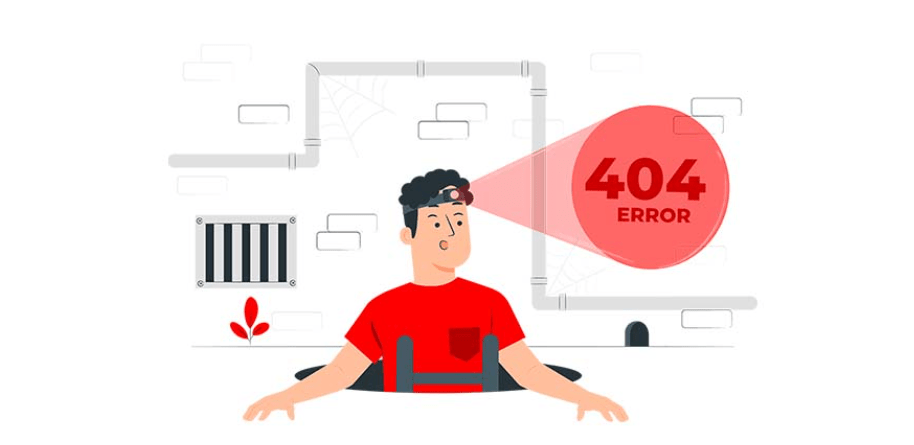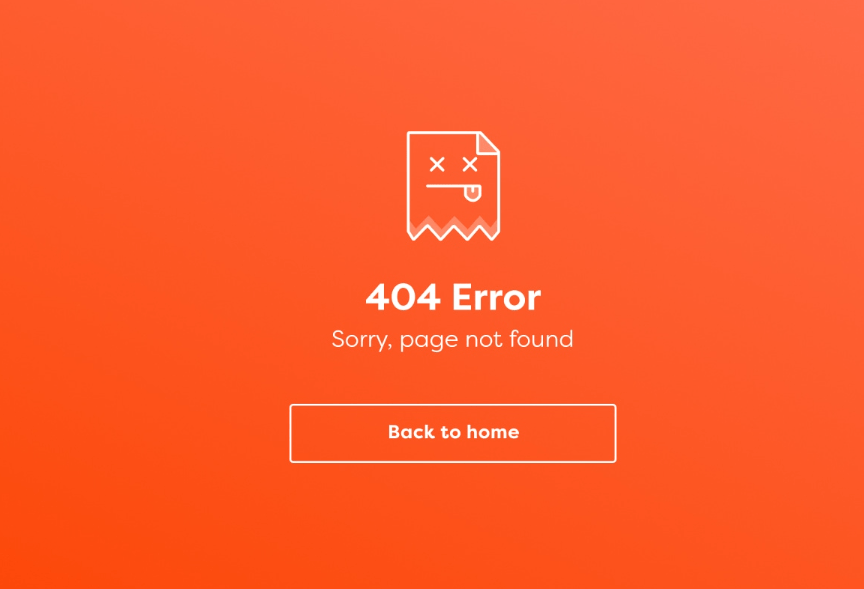When it comes to maintaining a website, one of the most frustrating things for both website owners and users is encountering a 404 error. A 404 error occurs when a page is not found on a website, leading to a dead end for the user. In this blog post, we will talk about how to find and fix such pages to enhance user experience and overall site efficiency.
Understanding the Impact of 404 Pages on Your Site
Imagine receiving the 404 error message not as an occasional loss of Internet connection with the site or some minor inconvenience that affects only the visitor; it is a serious web page pathology that is capable of causing much damage to your site. Those erroneous messages break the continuity of the session and induce stress while expanding the probability that they will leave the site earlier.
This sudden departure also increases, in general, the bounce rate, which in turn is used by the search engine to evaluate the site based on the flyer and its usefulness. This may indicate to the search engines that the content they are serving might not be fulfilling the users’ needs, thus socially causing your site to rank lower on the search engine results page.
However, apart from the user experience factor, having 404 errors will prove fatal to your site’s SEO results. Search engines’ fundamental mission is to give users the most relevant search results that are possible. A website riddled with broken links suggests neglect or poor maintenance, which can prompt search engines to devalue your site in their rankings. This devaluation could cause your website to be placed low within the search engines, and consumers both new and repeated may have a Herculean task in looking for your website online.
However, it may also give some signs such as having 404 pages that might influence the perception of the viewers towards the brand. Consumers want to feel that websites deliver smooth, quick, easy experiences. When that trust is interfered with by the constant manifestation of the 404 errors, then the company’s image suffers, thus making the users reluctant to revisit the site or even recommend it to others.
Not only does identifying and eradicating such faults enhance site accessibility but also serves to remind your audience and the search engines of your dedication to offering them the best experience possible –optimal for nourishing your bond with them.
How to Identify 404 Pages on Your Website
Locating 404 pages is therefore an essential process towards trying to enhance the way your site is structured and how accessible it is to your target audiences. Tools that can help in this aim are abundant and it enables website owners to identify which pages on their website are not delivering content adequately.
Google Search Console is one of the most effective tools, which may be helpful in this case. This tool presents a detailed report on issues such as Crawl errors for instance 404 errors that the Google bot encountered while crawling through your site. This allows you to directly address the pages Google has trouble accessing.
Another resource checklist includes website crawlers, for instance, Screaming Frog. Such tools work by crawling through the website and highlighting not only the broken links but the actual web pages which return 404 errors. This covers where also users may have issues if not full-blown those that search engines point out to you.
Online broken link checkers offer a more straightforward, user-friendly option. The website address is all that is required to input such services to identify links that lead to 404 errors so that this can give an initial overview of the areas of your website that need attention. Such an approach can be utilized in the prevention of controlling small circles or when performing preliminary assessments in between extensive examinations.
In utilizing these tools, it’s crucial to conduct regular checks. The dynamic nature of websites, with pages being added, removed, or updated, can lead to new 404 errors over time. Therefore, it will be possible to integrate 404 pages checking within standard maintenance tasks performed on your regularly-updated website so that you will not encounter such a problem and, thus, your audience will gladly navigate through your site.
Analyzing the Causes Behind Your 404 Errors
Understanding the source of these 404 errors is a critical starting point for creating a website that is much easier to navigate. There are a lot of reasons that can contribute to such disappointing situations, which are otherwise known as frustrating dead ends.
Among the most prevalent is the occurrence of URL typos or errors in linking, where a mistyped address or an incorrect hyperlink directs users to a nonexistent page. Similarly, if you’ve recently purged outdated content or restructured your site without setting up proper redirects, users attempting to access those old URLs will inevitably be met with a 404 error.
Another common cause is linked to external websites or user-generated content that points to pages on your site that have either been moved or removed entirely. It is therefore very essential to ensure weekly review of these links in the list of things to do when conducting the site’s maintenance.
Technical issues, such as problems with your site’s .htaccess file (on Apache servers), can also generate 404 errors. Misconfigurations in this file might redirect users to non-existent pages or interfere with your website’s ability to correctly display content. Moreover, server migration or changes in content management systems (CMS) can inadvertently lead to broken links and missing pages if not properly managed.
This means that it is even more imperative to come up with these causes since these will be useful not just in getting an answer to current 404 errors, but can also assist in avoiding their occurrence in the future. That way what is beneath the surface is rectified and the usability of a website becomes more pleasing to the visitors.
Strategies for Fixing and Redirecting 404 Pages
Addressing 404 errors effectively requires a strategic approach to both fixing and redirecting these problematic pages. A crucial first step is implementing redirects for URLs that have been moved or deleted. Utilizing a 301 redirect is the most efficient method, as it permanently routes traffic from the old URL to the new location, preserving your site’s SEO value.
For pages that have been removed or are temporarily unavailable, creating a custom 404 page is an advisable strategy. This custom page should be designed with user navigation in mind, incorporating links to popular or related content on your site, a home page link, and perhaps a search function. This design turns a potential site exit into an opportunity for further engagement.
Another technique involves reviewing your website to determine other common spellings of URLs with errors and coming up with maps to direct people to the right locations. This anticipates and mitigates user error, guiding them to the content they seek without interruption.
Lastly, regular monitoring and updating of your website are imperative. Utilize tools like Google Search Console and Screaming Frog to continually identify new 404 errors. Keeping an eye on your site’s external links is also key, as these can change over time due to external site modifications or deletions.
Thus, in using the above strategies, it is possible to minimize cases of 404 pages, along with the magnitude of their effects so that the users can have the best experience when browsing through your website.
Improving User Experience for Pages That Must Remain 404
In instances where certain pages on your website must unavoidably display a 404 error, there are innovative ways to enhance the experience for visitors, ensuring they remain engaged rather than leaving your site in frustration. The creation of a bespoke 404 page can transform an otherwise negative encounter into a positive interaction. This page should be more than a simple error notification; it should embody the spirit and aesthetics of your brand while offering functional navigation options.
Incorporate visually appealing elements and a friendly tone in the messaging to lighten the mood. Messages like “Oops! We can’t seem to find the page you’re looking for,” followed by a brief apology, can humanize the experience. Including a search bar prominently on the page allows users to quickly look for other relevant content, keeping them on your site without having to backtrack. Additionally, offering a list of suggestions, perhaps your most popular posts or a sitemap, can guide users back into the flow of your content.
For sites with specific focuses, consider adding a few lines of custom advice or recommendations. For example, a culinary website might include links to popular recipes or cooking tips, while a tech-focused site could offer links to the latest gadget reviews or how-to guides. This not only helps serve to retain users but also channels them to where they might find more of what they are interested in on your website.
By following these considerations of unavoidable 404 pages, you prove that the design is not only about practicality but about increasing audience satisfaction even when you have to show a common error.
Preventing Future 404 Errors on Your Site
To effectively guard against 404 errors, embracing a proactive maintenance approach is key. It involves conducting consistent audits for broken links within your website’s infrastructure. Leveraging tools like Google Search Console and Screaming Frog enables you to swiftly pinpoint and mend these vulnerabilities before they impact user experience. The questions are that there should be a routine to maintain and check the health of redirects to make sure the visitor is taken to the right content especially if there was a site redesign or changes on a page.
Another equally important contingency plan for maintaining a unique and realistic custom 404 page is to come up with error handling steps as users may tend to increase gradually when using the site. Thus, this page could also be utilized as a reference point to help visitors avoid getting lost while navigating through improve and stay interested even if they have reached a blind alley. This is because, by putting such preventions in place, not only do you add to the comfort of the user when using your site, but you also make sure that any negative changes do not affect the stand of your site in any search engine.


